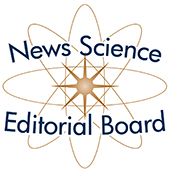Science News: Comorbidities, Anthropometric, Demographic, and Lifestyle Risk Factors for Ulnar Neuropathy at the Elbow: A Case Control Study
Published July 25, 2021
Education Science News
 Submitted by: Pritikanta Paul, MD
Submitted by: Pritikanta Paul, MD
Edited by: Francisco Gomez, MD
Mondelli M, Mattioli S, Vinciguerra C, et al. Comorbidities, anthropometric, demographic, and lifestyle risk factors for ulnar neuropathy at the elbow: A case control study. J Peripher Nerv Syst. 2020;25(4):401-412. doi:10.1111/jns.12420
Summary: Ulnar neuropathy at the elbow (UNE) is second only to carpal tunnel syndrome as the most frequently encountered focal neuropathy. The clinical presentation of UNE can vary from intermittent fourth and fifth digit paresthesias to anesthesia as well as weakness and atrophy of the ulnar muscles.
The authors conducted prospective multi center case-control study in which they enrolled 220 cases and 460 controls (61.8% males, mean age 51.7 years), cases were confirmed via electromyography and nerve conduction studies. Criteria for inclusion in the study comprised electrodiagnostic abnormalities attributable to injury at the elbow.
Clinical presentations in this case included:
- Left side more commonly affected, or more severely
- 43.2% of patients had lone sensory loss in the ulnar territory
- 38.2% presented had combined sensorimotor symptoms
| Factor | Odds Ratio/Confidence Interval |
|---|---|
| Male Gender | 2.4 / 1.6-3.7 |
| Tobacco use >25 pack/years | 2.3/1.3-4.1 |
| Body Mass Index | 1.05/1.01-1.1 |
| Polyneuropathy | 4.1/1.5-11.5 |
| Leaning over desk with flexed elbow | 1.5/1.0-2.2 |
| Cubital Groove Width | 0.8/0.74-0.85 |
Of note, the cubital groove width was negatively associated with development of UNE, while narrowing had a dose dependent relationship, each millimeter of narrowing increased risk of UNE by 25%.
Similar Articles:
Osei DA, Groves AP, Bommarito K, Ray WZ. Cubital tunnel syndrome: Incidence and demographics in a national administrative database. Neurosurgery. 2017 Mar 1;80(3):417-420. doi: 10.1093/neuros/nyw061. PMID: 28362959.
